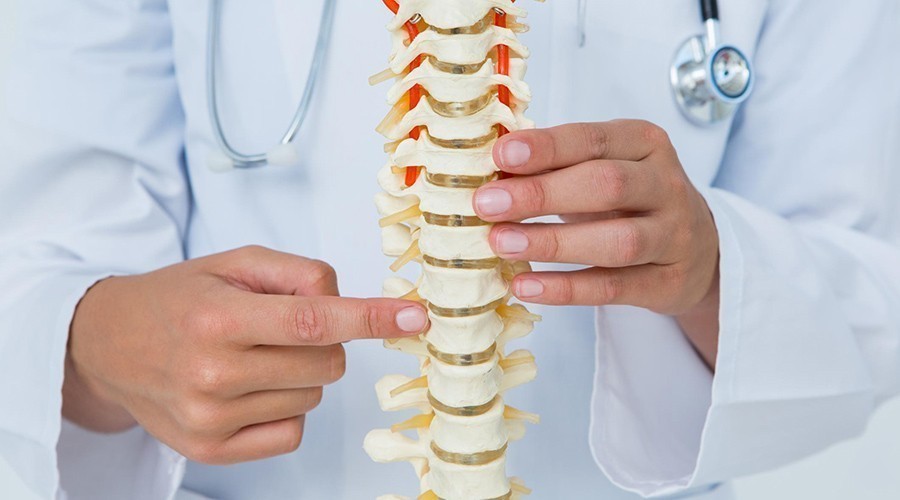Our body contains over 200 bones which acts as a “frame” that supports, protects and move the body. The spine or the spinal column is a very special group of bones which houses our central nervous system. Not only does our spine protect the delicate brain and the spinal cord and spinal nerves, it also serves as a load bearing structure for our body. It is designed to give us maximum flexibility and mobility while still accomplishing its primary purpose of protecting the central nervous system. Spine is made up of individual bones called vertebrae and is divided into four groups: cervical spine, thoracic spine, lumbar spine and sacrum. Our spine is beautifully designed to smoothly transfer the energy encountered during our daily activity and this is accomplished by each group possessing special physical characteristics. Cervical spine and lumbar spine contain curvature called lordosis, while thoracic spine and sacrum contain curvature called kyphosis. They form a continuous sinuous line that is wavelike in nature, thus acting as a “spring” to smoothly transfer and disperse the energy from the ground to the head. If we lose some or all of these curvatures in a given spinal area, problems can occur. Before you get to the point of seeking help for the conditions you have, awareness of your body position and necessary changes to your habit will help you manage your problems.
Cervical spine is the highest portion of the spinal column and contains 7 vertebrae. It connects to the base of the skull via the atlas and connects to the thoracic spine via the 7th cervical vertebrae. Cervical spine has the maximum mobility out of all the group which means that stabilizing and strengthening the supporting muscles will be critical. Cervical spine also houses vertebral artery as well as being close to the vagus nerve, which, when compromised, could cause other problems. Unfortunately, today’s modern and sedentary lifestyle is detrimental to cervical spinal health. Children sitting at a desk most of the day, office workers working in the office for hours staring at a computer screen, prolonged driving without breaks, watching televisions combined with poor sitting position, using our devices and smart phones, pursuing our hobbies that causes head forward posture as well as sleeping on our stomach all contribute to cervical spine dysfunction over time.
Thoracic spine is situated below the cervical spine and above the lumbar spine and it is characterized by its attachments to 12 ribs. Incidentally, there are 12 thoracic vertebrae and it is the second most stable and rigid spinal area. This stability comes from its connection to the ribs and sternum, and this rigidity is necessary since it protects our heart and lungs within it. bottom part of the ribs are also attachment points for our diaphragm . To keep the thoracic spine in healthy condition, exercise and proper movement is necessary. Unfortunately, our modern lifestyle habits negatively affects the integrity of the thoracic spine and the thoracic cage, with consequences being a collapsed rib cage or excess kyphotic curve.
Lumbar spine is situated between thoracic spine and the sacrum. There are 5 lumbar spine and it is characterized by its lordotic curve, just like the cervical spine. Unlike the cervical spine however, it is the biggest in size. This size is necessary since it bears the weight of the upper trunk. Functionally the lumbar spine is more mobile than the thoracic spine but less than the cervical spine. It is an area of perfect balance between stability and mobility when it is functioning properly. Unfortunately, today’s sedentary lifestyle affects the condition of the lumbar spine negatively and many pathological conditions can result from it. As an example, lower back pain is the number one cause of work related disability in adults under the age of 45. Statistics show that 1/3 or more of the adult population has spine problems, and that 10 to 15% of these people have severe symptoms that can sometimes last for several months. If you have a pain in the lumbar spine, do not ignore it. Pain is an early indication of an ongoing problem and our body’s way of telling us that something is wrong. Sooner you seek help, sooner we can help you recover by utilizing all the treatment method and protocol available here at West Medic.

